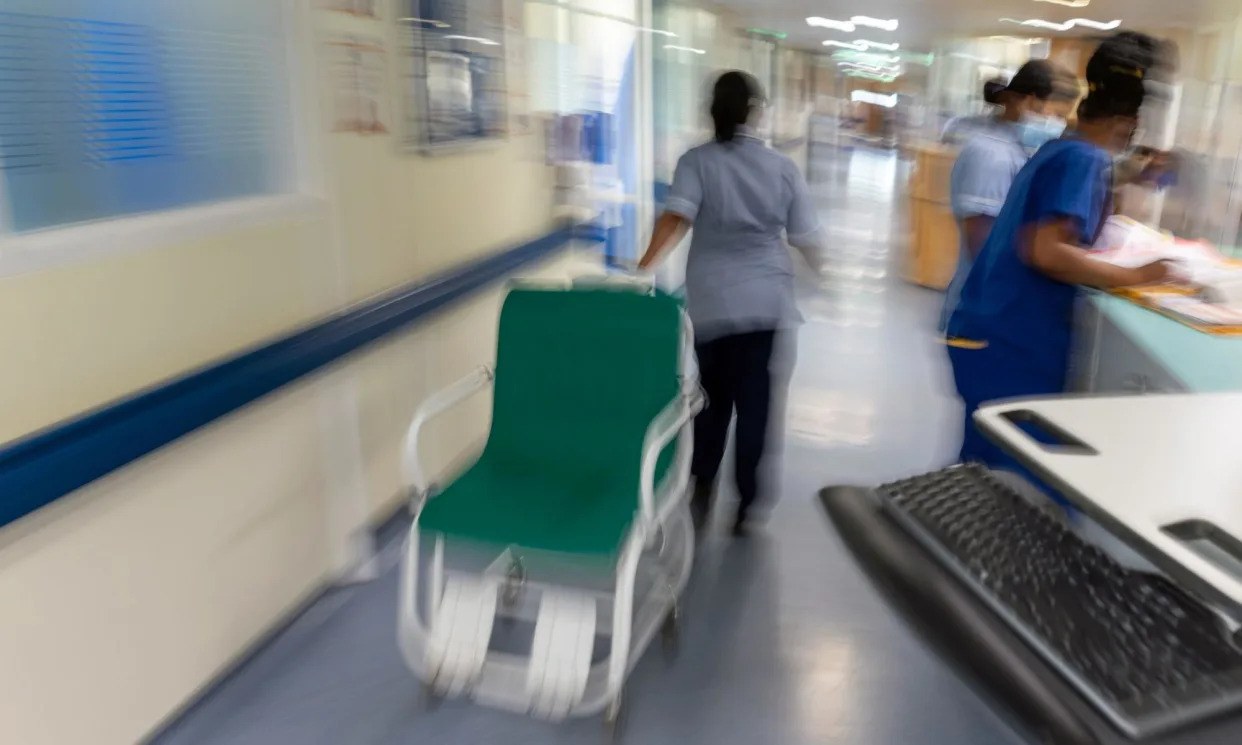James Tapper
Sun, 5 May 2024

Extra funding granted to the NHS only covers inflation and pay rises and fails to keep pace with the ageing population.Photograph: Jeff Moore/PA
Hospitals are being forced to cut medical staff, threatening their ability to care for patients, senior health leaders have warned.
NHS trusts are reporting budget deficits after the chancellor Jeremy Hunt gave England’s health service £2.5bn extra funding, which only covers inflation and pay increases.
The UK’s ageing population and the impact of having more than 6 million patients waiting for more than 7.5m treatments means that demand on the health service has increased substantially.
NHS leaders had been recruiting medical staff as part of their efforts to tackle the waiting list backlog, one of Rishi Sunak’s five pledges, but say they are now being told their priority must be to balance the books. The original target was to cut NHS England’s £4.6bn agency workers bill, but that has expanded to include permanent staff and may mean waiting lists for some treatments rise rather than fall.
There are now 25 health service bodies in NHS England’s recovery support programme, the equivalent of special measures, and others are reporting significant deficits. Manchester University NHS Foundation Trust has a £194.7m gap. Mid and South Essex Foundation Trust is £57m down, and King’s College Hospital Foundation Trust expects to reach £90m.
Staffordshire and Stoke-on-Trent Integrated Care System, which includes four NHS bodies, faces a deficit of £130m, and would need to cut 10% of its workforce, or 2,300 jobs, to break even. Board member Jon Rouse said at a recent meeting that trying to fix the problem in a year would “do significant damage including … patient harm,” the Health Service Journal reported.
Matthew Taylor, chief executive of the NHS Confederation, said many organisations were looking for efficiency savings up to 10%, when 1.5% was a realistic maximum. “There is not a leader in the health service who is not focused on how on earth they’re going to make the books balance … But a lot are saying the only way they can manage to make their books balance is to effectively reduce the service they can provide.
“There’s no question that there will be an impact on clinicians’ posts and staffing cover. People will look to cut back on agency costs if they can. But agency workers are there to fill gaps. It’s also generally recognised that the NHS is under-managed. So cutting back on managers and administrators just means that a bigger burden falls on clinicians.”
Siva Anandaciva, chief analyst at the King’s Fund, said hospital leaders had been trying to hire staff to reduce the number of vacancies, which stood at 7.6% last December. Now they were being told “no, your number one job is to balance the books and as a result you’re going to have to reduce staffing headcount because that’s the biggest single area of spending,” he said.
“Walking around hospitals, people are still saying ‘we are understaffed, we are understaffed at night in particular, so we don’t feel we are in a position to cut back on numbers without inevitably having an impact on patient care’, whether that’s quality of care or access to care.”
Sir Julian Hartley, chief executive of NHS Providers, said there were still 110,000 vacancies across England and that “severe staff shortages … could get even worse with some trusts reporting plans to reduce the workforce to help to balance the books.
“Trusts are doing all they can to protect patient services and get on with tackling waiting lists but costs, not least the £11bn-plus repairs backlog, continue to mount. And unless the government funds in full NHS staff pay rises for 2024-25, the service may have to find billions of pounds for wage bills from already squeezed budgets.”
Anita Charlesworth, director of research at the Health Foundation, said: “We need to break these endless cycles of boom and bust and that means creating a stable and sustainable workforce that has the equipment and resources it needs to deliver high quality care. Hastily cutting staff at a time when the elective waiting lists stands at over 7.5m is counterproductive and would undermine the NHS’s long-term recovery.”
Professor Pat Cullen, general secretary of the Royal College of Nursing, said: “I am putting down a marker that cuts to nursing will result in patient deaths. NHS leaders preparing to cut staff and ask an already burnt-out workforce to do even more with less need to think again. It is incredibly dangerous.”
An NHS spokesperson said: “NHS organisations are developing their financial plans which will focus on continuing to prioritise patient care while delivering the best value for taxpayers within the resources available.”
A Department of Health and Social Care spokesperson said the NHS was getting record funding of nearly £165bn a year “an increase of 13% in real terms compared to 2019-20, supporting trusts and allowing them to continue to deliver on what matters most to patients – improving access to services and cutting waiting lists.
“At the spring budget the chancellor announced that NHS England will receive a £2.5bn day-to-day funding boost this year and a further £3.4bn investment in the latest technology from 2025, helping to unlock £35bn in savings.”
No comments:
Post a Comment